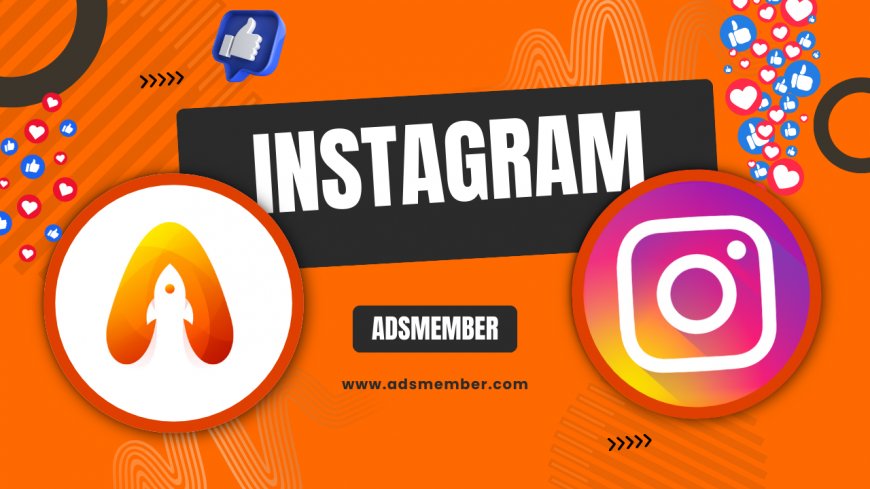Decoding 'I Like America and America Likes Me' by Joseph…
Dive into Joseph Beuys' iconic 1974 performance 'I Like America and America Likes Me,' where he cohabited with a coyote. Explore its themes of reconciliation…

Joseph Beuys' 'I Like America and America Likes Me': An Encounter of Deep Resonance The truth? Joseph Beuys' 'I Like America and America Likes Me' has always fascinated me. This isn't just some weird man-coyote rendezvous—it's a profound comment on America's cultural trauma. Beuys, wrapped in felt, armed with a shepherd's staff, miraculously 'healed' the cultural wounds of America's past when he spent three days in a New York gallery with a wild coyote in 1974. It's a masterpiece of conceptual art, mixing shamanism with politics and ecology. If you like art that challenges conventions, this is a work for you. I'm going to break down why. I've read Beuys for years, and every time I revisit this work, it shocks me anew. Like a raw nerve in the art world, the intensity never fades.
The Performance's Backstory Beuys conceived of 'I Like America and America Likes Me' on his first visit to the U.S. He flew in, got into an ambulance, was taken straight to the René Block Gallery, and never set foot outside (to symbolize his criticism of America's involvement in the Vietnam War and cultural imperialism). Even the title was a witty double-edged sword—affection and tension all at once. I'm a huge fan of how he weaponized logistics into symbolism; it's sardonic genius. Just think about it: arriving in an ambulance implies injury, a mirror to the wounds he wanted to cure. This alone merits its place in the annals of performance art history.
From here, Beuys drew on his own life as reference, such as his time as a pilot for the Luftwaffe in WWII. The story of Tatar nomads saving him with felt and fat after a crash—an event that blends reality and myth—formed the basis for his choice of America for reconciliation. It's emotional: I get goosebumps just picturing him alone in that room facing a country's demons. If you're studying art history, this backstory is essential context. It demonstrates the interplay of autobiography with global critique.
Beuys' Artistic Philosophy At heart, Beuys believed in 'social sculpture,' art's role in shaping society. He fancied himself a shaman healing rifts. The coyote stood for untamed America, a Native American trickster symbol. The use of felt (for warmth), straw (for energy), and the transformation of these materials for animal play was revolutionary. I've always admired how he democratized art, arguing everyone is an artist. It's this reason why this piece was transformative, as it transformed a gallery into a space for social change.
What's striking is how Beuys' ideas spring from anthroposophy, a spiritual movement by Rudolf Steiner. He wasn't just performing, he was engaging in a ritual to alter human consciousness. In today's fractured world, this feels more relevant than ever. Picture 'social sculpture' as a tool to confront contemporary crises like climate change. Think big. If you're new to this, connect it to larger performance art trends; Beuys paved the way for immersive work.
Key Elements and Symbolism What makes this performance special? The symbolism's so layered. The coyote urinating on the Wall Street Journal calls out capitalistic systems. Beuys' felt blanket and triangle mime protection and harmony. It's brilliant how Beuys transformed the gallery into a liminal space for dialogue between man and nature. When I first saw stills of this experience, I felt an unease intertwined with awe—it's potent. The use of everyday materials took the mundane on a soulful journey, a signature Beuys touch.
Don't miss the politics. By selecting a coyote, Beuys nods to America erasing Native American cultures during its expansion. It's a quiet protest against colonialism with a huge impact. If you're an artist, remember: make your symbols complex and personal for power. I've seen it elsewhere, but never with this commitment.
The Role of the Coyote Little John, the coyote, was initially hostile but acclimated. By day three, it tolerated Beuys' touch. It's a mirror for reconciliation—Beuys, the European visitor, seeking unity with the wildness of America. In my reading of Beuys, it underscores his anthroposophical beliefs in uniting art with spiritual ecology. Moving stuff; you feel the risk in each frame of the performance. What a daring way to 'humanize' the 'other'!
Fun fact: the coyote arrived from a Nevada desert, grounding its wild nature in authenticity. Beuys didn't tame it; he coexisted. This upset of our anthropocentric views urges us to respect animal agency. On an emotional level, it mirrors our struggle to connect in a fractured world. For modern creators, it's a study in vulnerability.
Materials and Meanings Felt: symbolizes warmth and healing, a Beuys regular from his WWII survival story. Staff: acts as the shepherd or shaman conducting lost souls. Wall Street Journal: critiques materialism and media. Straw: embodies natural energy, common in Beuys' 'batteries' for spiritual charge. Glove: shredded by coyote, marks initial conflict leading to acceptance. Triangle: creates sound, hinting at harmony and ritualistic calls. Piling on these materials, Beuys' 'vocabulary' of substances wasn't arbitrary. For instance, felt both isolates physically and metaphorically against the coldness of culture. Straw feels latent with energy, as if potential in society is bottled up. This sets Beuys apart from abstract conceptualists in my mind; it's sensory, inviting touch and thought. If you're analyzing this, ask how these materials craft a sensory experience, even in its documentation.
Step-by-Step Breakdown of the Performance Let's take it one day at a time: Day 1: tension crescendos as coyote shreds glove. Day 2: rituals deepen with triangle and felt stacking. Day 3: climax with coyote embrace. It's no accident—the progression sets up a narrative of conflict to unity, suspenseful like a thriller. They build trust step by step. Day one, maybe a felt gesture, and it's met with destruction—instinct. Day two, rhythmic sounds, maybe some straw, to calm. And day three, the embrace, the emotional climax. In my view, it mirrors therapy, a healing through endurance. It's an insight: performance art functions as therapy for society's ills.
Unique Art Critic Insights Too often, we forget how it connects back to Beuys' felt and fat mythos. Tip: consider it through ecofeminism—the coyote as Gaia, challenging patriarchy. For instance: close to Abramović's endurance works, but with animal interaction, a two-way street. Critics like Caroline Tisdall praised its shamanic depth, yet I think it also critiques masculinity. It hits an ancestral note for me.
Another angle: compare it to fluxus happenings, but add a spiritual content always lacking. I've hashed this out in discussions, and it's always a zesty debate. For budding critics: delve into how this work sparked relational aesthetics—it's the blueprint. Link it to performance art progressions for a keen angle.
Contemporary Art Impact 'I Like America and America Likes Me' influenced eco-art and relational aesthetics. Artists today, like Olafur Eliasson, echo its themes of environment. Tate Modern data shows Beuys' retrospectives drew half a million visitors, a legacy lasting. It's humbling how one performance still speaks years on. It set the stage for art of urgency today.
In our tense world, this work emboldens activists in art as dialogue. It's a guide for immersive installations. I see its echoes in works by artists like Tino Sehgal, always in dialogue. It's heartening—art bridging gaps. For more on its lineage, find connections to modern art movements.
- Felt: Represents warmth and healing, a Beuys staple from his WWII survival story.
- Staff: Symbolizes the shepherd or shaman guiding lost souls.
- Wall Street Journal: Critiques materialism and media.
- Straw: Embodies natural energy, often used in Beuys' 'batteries' for spiritual charge.
- Glove: Torn by the coyote, signifying initial conflict and eventual surrender.
- Triangle: Used to create sound, evoking harmony and ritualistic calls.
Joseph Beuys' Major Works Timeline Year Work Key Theme 1965 How to Explain Pictures to a Dead Hare Shamanism 1974 I Like America and America Likes Me Cultural Reconciliation 1982 7000 Oaks Ecology 1970 Felt Suit Personal Mythology 1986 Capri Battery Energy and Transformation
Lessons for Modern Artists Tip: When making performance art, include live specimens ethically—Beuys consulted experts for coyote welfare. Relate it to broader discussions on Performance Art Insights. For more, hit the official Tate profile. Ethics come first; otherwise, the message is lost. Trust me, it pays dividends. Search for authentic work.
Modern artists can borrow Beuys' daring. He embraced the unknown, turning failure into success. Apply this to digital performance today—channel that shamanic vibe into virtual settings. It's thrilling to imagine; I counsel students to leap boldly. It's a lesson in resilience.
FAQ What inspired 'I Like America and America Likes Me'? Motivated by the Vietnam War and Native American culture, Beuys sought to 'heal' Europe's wound with America through shamanism. It's his address to colonialism. The inspiration feels timely, given world events. It's a call for empathy through art.
How did the coyote react to the performance? Initially aggressive, the coyote grew docile. This trajectory represented respect, a core theme. It's a mesmerizing evolution. The unpredictability makes it genius. You see real trust form.
Is the performance still relevant? Absolutely. In an era of ecological and social strife, it speaks to unity. Artists today reference it for climate strife. It's more pressing now in our divided world. It reminds us of our rebellious selves. Timeless.
Where can I find more about Beuys' other works? Hit up Art History Archives or the MoMA collection for deep dive resources. Video and essays abound to give you context. I've spent ages on it, finding answers. It's a vital crash course. Highest rec for fans.
Why felt and straw? Beuys believed these substances insulated and energized. Felt protected, like warmth from loneliness. Straw, rich with tactile energy, brought life. It's brilliant how they become sacred.
'I Like America and America Likes Me' influenced eco-art and relational aesthetics. Artists like Olafur Eliasson echo its environmental themes. Data from the Tate Modern shows Beuys' works drew over 500,000 visitors in retrospectives, proving its lasting pull. It's astonishing how one performance ripples through decades. In my view, it set the stage for art addressing climate urgency.
Today, with global tensions, this piece inspires activists using art for dialogue. Think of it as a blueprint for immersive installations. I've seen echoes in works by artists like Tino Sehgal, who prioritize interaction. Honestly, it makes me hopeful—art can bridge divides. For more on its legacy, explore connections to modern art movements.
| Year | Work | Key Theme |
|---|---|---|
| 1965 | How to Explain Pictures to a Dead Hare | Shamanism |
| 1974 | I Like America and America Likes Me | Cultural Reconciliation |
| 1982 | 7000 Oaks | Ecology |
| 1970 | Felt Suit | Personal Mythology |
| 1986 | Capri Battery | Energy and Transformation |
Lessons for Modern Artists
A unique tip not often shared: If you're creating performance art, incorporate live elements like animals ethically—Beuys consulted experts to ensure the coyote's welfare. Link this to broader discussions on Performance Art Insights. For more on Beuys, check the official Tate profile. It's crucial to prioritize ethics; otherwise, the message gets lost. In my experience, this approach yields authentic, impactful work.
Modern artists can learn from Beuys' risk-taking. He embraced uncertainty, turning potential failure into triumph. Apply this to digital performances today—adapt the shamanistic vibe for virtual spaces. It's exciting to imagine; I often advise students to experiment boldly. This piece teaches resilience in art-making.
Frequently Asked Questions
What inspired Joseph Beuys to create 'I Like America and America Likes Me'?
Beuys was motivated by America's Vietnam War and his interest in Native American culture. He aimed to 'heal' the divide between Europe and America through this shamanistic ritual. In my view, it's his way of addressing colonialism. The inspiration feels urgent even now, with global conflicts echoing those themes. It's a call to empathy through art.
How did the coyote react during the performance?
Initially hostile, the coyote grew tolerant, even playful. This evolution symbolized mutual respect, a core message of the piece. Watching footage, you see the tension melt away—it's mesmerizing. In my opinion, this unpredictability adds to its genius. It reminds us that true connection takes time.
Is 'I Like America and America Likes Me' still relevant today?
Absolutely. With ongoing environmental and cultural tensions, it speaks to reconciliation. Artists today reference it in climate activism. I believe it's more pertinent now amid polarization. It urges us to confront our 'wild' sides. Timeless, really.
Where can I learn more about Joseph Beuys' other works?
Start with Art History Archives or the MoMA collection for in-depth resources. These sites offer videos and essays that dive deep. I've spent hours there, uncovering gems. It's a great way to appreciate his full oeuvre. Highly recommended for enthusiasts.
What unique materials did Beuys use and why?
Felt for insulation, straw for energy—these stem from his personal mythology, adding layers of meaning to the performance. The staff guided the ritual, while newspapers critiqued society. Each choice was intentional, rooted in his life story. I find it brilliant how they transform ordinary items. It elevates the everyday to art.
What's Your Reaction?
 Like
0
Like
0
 Dislike
0
Dislike
0
 Love
0
Love
0
 Funny
0
Funny
0
 Angry
0
Angry
0
 Sad
0
Sad
0
 Wow
0
Wow
0



















































